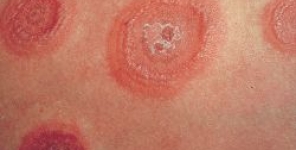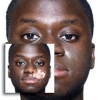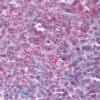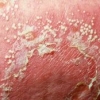Una rivisitazione del metodo UVA COLIPA In Vitro.
 È stato effettuato uno studio multi-centrico derivante dal metodo UVA COLIPA in vitro al fine di valutare l'influenza delle condizioni di prova sui valori del fattore di protezione UVA (UVAPF) in termini di ampiezza, riproducibilità tra laboratori e correlazione con i risultati UVA in vivo .
È stato effettuato uno studio multi-centrico derivante dal metodo UVA COLIPA in vitro al fine di valutare l'influenza delle condizioni di prova sui valori del fattore di protezione UVA (UVAPF) in termini di ampiezza, riproducibilità tra laboratori e correlazione con i risultati UVA in vivo .
Sono stati usati otto prodotti con una gamma di UVAPF in vivo da 3 a 29. Due tipi diversi di piastre, ossia le piastre ad elevata rugosità (5μm) e a bassa rugosità (2μm) sono state utilizzate con un tasso di applicazione diverso per ognuna di esse (1.3mg/cm² e 0.75mg/cm² rispettivamente). La dose UVR applicata ad entrambi i tipi di piastra ha seguito lo stesso principio della prova originale (1.2J/cm² x UVAPF0).
Sono state osservate forti correlazioni significative tra i valori di UVAPF in vitro e in vivo, per entrambe le piastre (correlazione di Pearson > 0.9, p≤ 0.01). La correlazione e la pendenza ottenute con le piastre a bassa rugosità hanno confermato i risultati precedentemente ottenuti con COLIPA. In tutti i laboratori, i valori UVAPF più elevati sono stati ottenuti nelle piastre ad elevata rugosità (p<0.01). La riproducibilità dei valori UVAPF tra laboratori è stata paragonabile per i due valori di rugosità delle due piastre (bassa rugosità, COV = 8%; alta rugosità, COV = 12%).
Considerando i confronti in vitro/in vivo, è stata osservata una regressione di pendenza dello 0.83 per le piastre a bassa rugosità, in confronto con il valore di 1.05 per le piastre ad elevata rugosità. Quindi, la precisione del metodo è stata migliorata con l'uso delle piastre ad alta rugosità.
Potendo raccomandare l'uso di un solo tipo di piastre nel test COLIPA UVA in vitro, è stata selezionata la piastra ad alta rugosità su base continuativa, per limitare la variabilità dei risultati e per fornire una migliore precisione dei dati in vivo.
Storia della pubblicazione:
Titolo: The Revised COLIPA In Vitro UVA Method
Rivista: International Journal of Cosmetic Science. doi: 10.1111/j.1468-2494.2012.00748.x
Autori: Dominique Moyal, Valerie Alard, Christiane Bertin, France Boyer, Mike Brown, Ludger Kolbe, Paul Matts, Marc Pissavini
Affiliazioni: L'Oreal, Research & Innovation, Paris, Asnieres sur Seine, France
LVMH Recherche, Branche Parfums et Cosme′tique, France
Johnson & Johnson Consumer France, Skin Care Research Institute, Issy les, France
Pierre Fabre, Institute de Recherche, Toulouse, France
The Boots Company PLC, Global Product Development (Innovation),, Nottingham, United Kingdom
Beiersdorf AG, Forschung und Entwicklung, Hamburg, Germany
Procter & Gamble, Rusham Park Egham, Surrey, United Kingdom
Coty-Lancaster, International Research & Development Centerm, Monaco, Monaco
Abstract:
A multi-centred study derived from the COLIPA In Vitro UVA Method was performed to assess the influence of test conditions on UVA protection factor (UVAPF) values in terms of amplitude, reproducibility between laboratories and correlation with in vivo UVA results. 8 products with a range of in vivo UVAPF from 3 to 29 were used. Two different types of plates, namely high roughness (5μm) and low roughness (2μm) plates were used with a different application rate for each (1.3mg/cm² and 0.75mg/cm² respectively). The UVR dose applied to both plate types followed the same principle as the original test (1.2J/cm² x UVAPF0).
Strong, significant correlations between in vitro and in vivo UVAPF values were observed for both plate types (Pearson correlation > 0.9, p≤ 0.01). The correlation and slope obtained with the low roughness plates confirmed the previous results obtained by COLIPA. Across all laboratories, higher UVAPF values were obtained on the high roughness plates (p<0.01). Reproducibility of UVAPF values between laboratories was comparable between the two plate roughness values (low roughness, COV = 8%; high roughness, COV = 12%).
Considering the in vitro / in vivo comparisons, a regression slope of 0.83 was observed for the low roughness plates, in comparison with a value of 1.05 for the high roughness plates. The accuracy of the method was improved, therefore, with the use of the high roughness plates.
With a constraint to recommend the use of only one plate type in the COLIPA UVA In Vitro Test, the high roughness plate was selected on an on-going basis to limit variability of results and to provide better accuracy with in vivo data.





